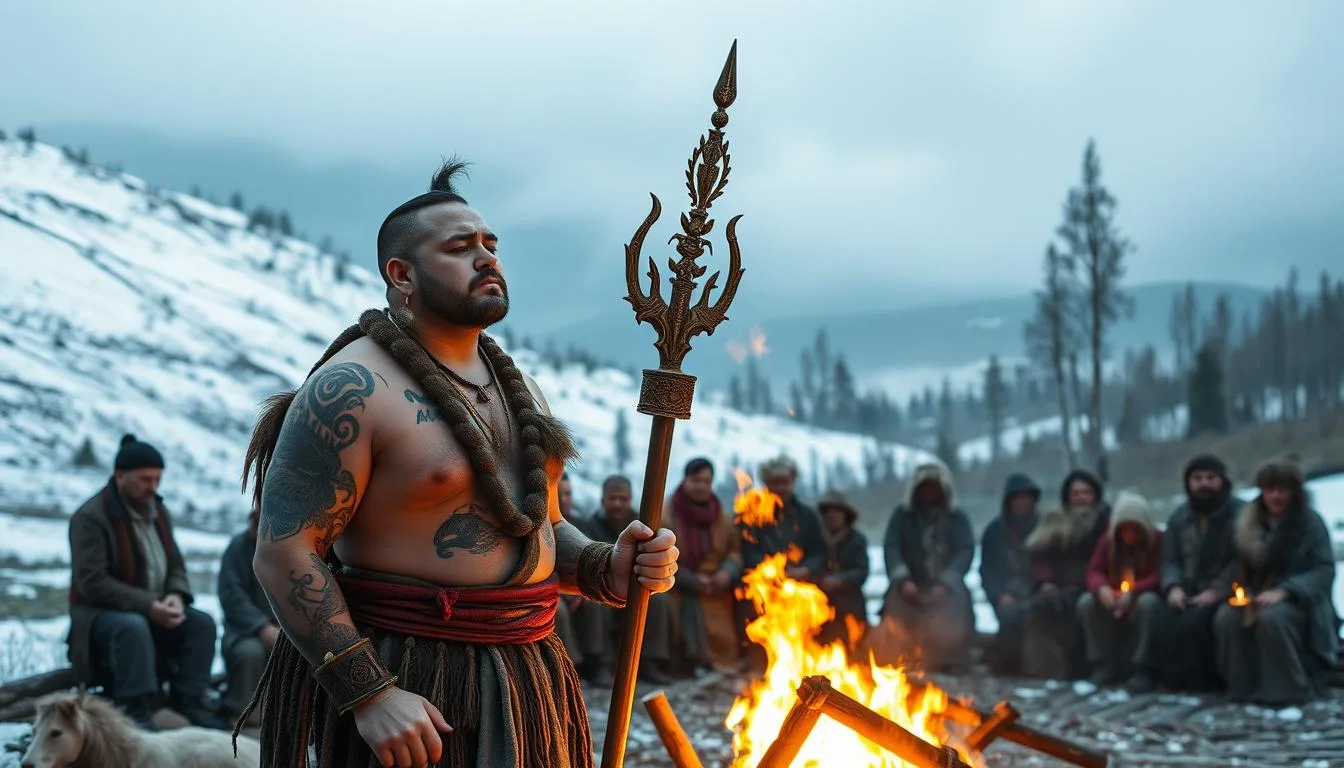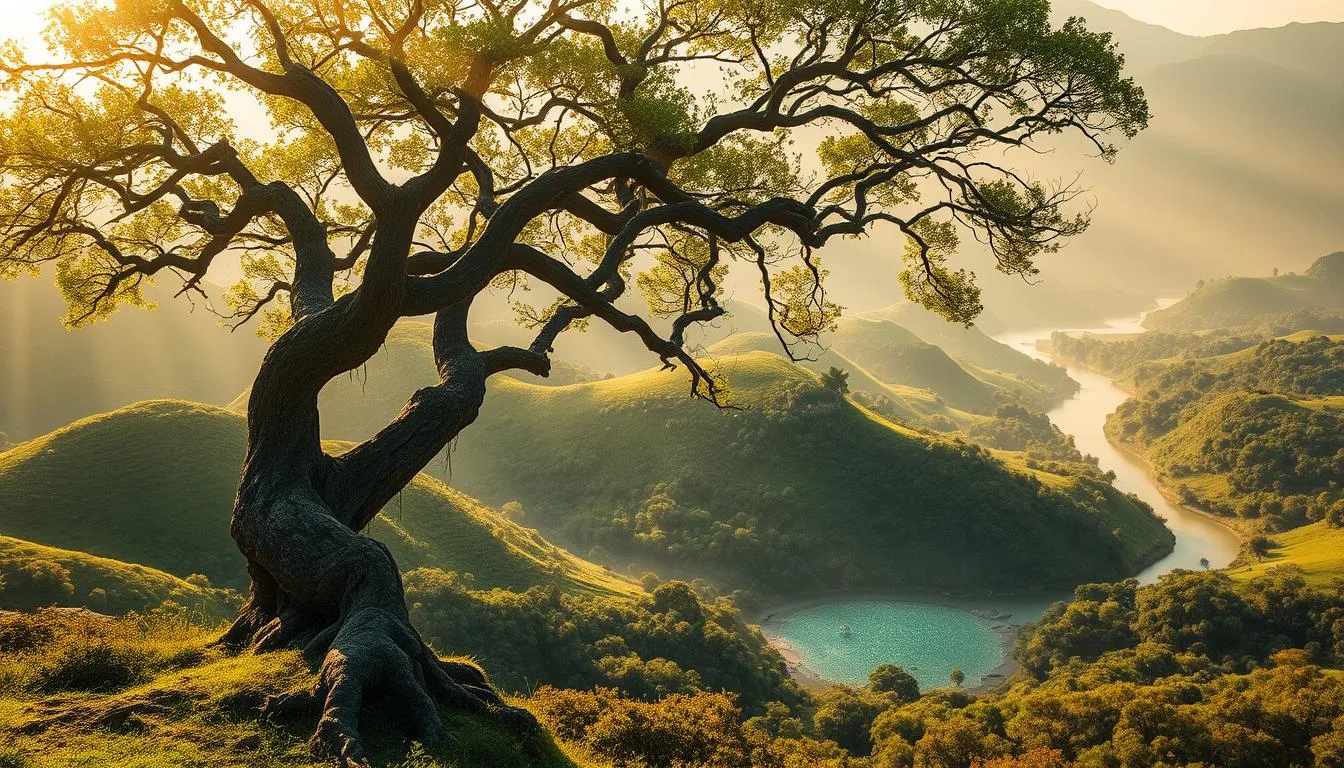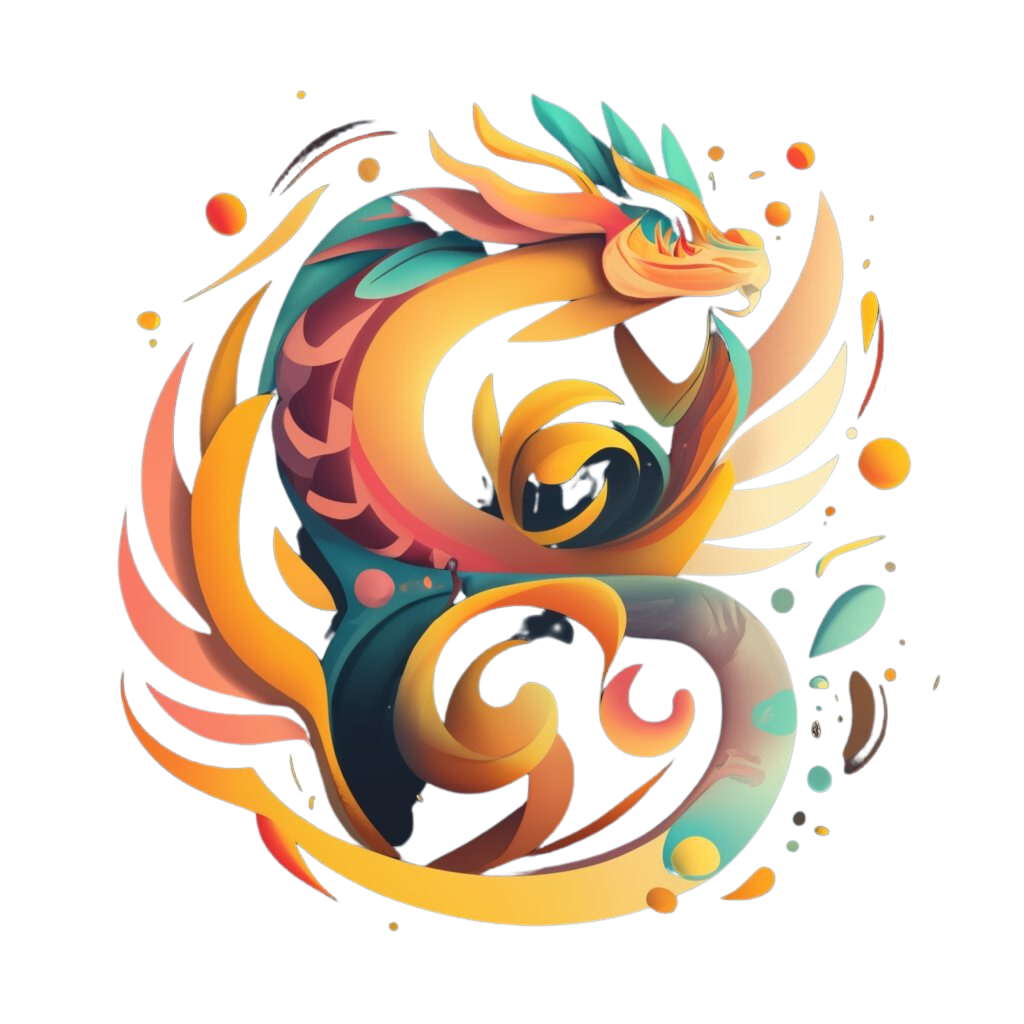Step into a world where forests whisper secrets. Icy rivers hold ancient stories. Siberia’s vast wilderness is alive with mythical creatures.
These beings have captivated imaginations for generations. They turn snow-capped peaks and tundras into stages for timeless tales.
Nestled between icy landscapes and human curiosity, Siberian Mythical Creatures symbolize nature’s untamed spirit. They come from folklore passed through generations. This blends history with the supernatural.
Every story shows the deep bond between locals and their environment. The line between reality and myth often blurs.
Join us as we uncover these enigmatic figures. Learn how they shape traditions and inspire art. They connect modern minds to ancestral wonder.
From ancient myths to today’s cultural references, their legacy invites you. Explore the magic hidden in Siberia’s icy heart.
Journey Through Siberia’s Enchanted Landscapes
Siberia's vast forests and icy tundras are more than places. They are Siberian folklore canvases. Rivers, mountains, and forests tell stories for centuries.

The Natural Wonders of the Region
These places inspire magical tales:
- Lake Baikal: Its depths hold myths of water spirits guarding its icy waters.
- Mountains like Cherskiy Ridge: Peaks where shamans once communed with spirits.
- Primordial Taiga: Forests whispered to be alive, guiding travelers or trapping the unwary.
Hidden Tribes and Their Tales
Indigenous groups like the Evenks and Buryats keep stories alive. Their legends explain natural wonders:
| Tribal Group | Legendary Creature | Symbolism |
|---|---|---|
| Evenks | Yuke | Thunder spirit shaping weather |
| Buryats | Ulan Gegen | Fire-slug guardian of sacred sites |
These stories link land and culture. They make Siberian folklore a bridge between past and present.
Ancient Legends and Folklore of the North
For centuries, Siberia's northern lands were filled with stories. Ancient legends of spirit bears, fire-eyed dragons, and shape-shifters were common. These tales were not just myths; they guided people's lives.

- Leshy: Forest guardians punishing those who harm nature
- Snegurochka: The snow maiden linked to winter solstice rituals
- Chuchum: A world pillar from Evenki creation myths
Each ancient legend taught survival lessons. The Nganasan people's stories warned against harming nature. Dolgan epics celebrated the sacred bond between humans and reindeer. Shamans told these stories to keep the world in balance.
Now, these tales are in museums and festivals. People still share stories of Yis, a water god from ancient legends. These stories connect the past to today, showing myths are living history.
Mysteries of Siberian Mythical Creatures: History & Legacy
Siberia's mythical creatures come from old spiritual beliefs. These stories started as ways to explain nature. They were shaped by communities' deep respect for the supernatural.

Origins in Shamanic Traditions
Shamans were like messengers between worlds. They used rituals to talk to spirits. Their stories of animal guides and elemental forces created tales like the Forest Guardian or the Ice Devil.
These stories helped communities come together. They also honored the land's secrets.
The Evolution of Enduring Myths
Myths lived on through stories passed down. As cultures mixed, these stories changed. Now, books and films keep these legends alive, mixing old tales with new ideas.
Today, people and scholars explore these stories. They see how they show Siberia's deep connection to the unknown.
Cultural Influences on Mythical Narratives
In Siberia's enchanted landscapes, cultures blended over centuries. Groups like the Evenks and Buryats shared stories. Their beliefs mixed into local tales.

Nomads and forest people saw nature as full of spirits. This view came from harsh weather and big wilderness. Key cultural parts in these stories are:
- Oral storytelling traditions preserving ancestral wisdom
- Shamanic rituals connecting communities to natural forces
- Interactions between indigenous and Russian settlers
| Cultural Group | Influence on Myths |
|---|---|
| Evenks | Animal spirit guides in taiga tales |
| Buryats | Lake monsters linked to sacred waters |
| Russians | Christian symbolism merged with local lore |
Today, these stories live on in festivals like the Evenk “Ovy” ceremonies. Fire rituals honor nature spirits. The enchanted landscapes still tell ancient tales to those who listen.
Symbolism and Spiritual Significance
In Siberia's myths and rituals, there's deep meaning. These stories connect the physical and spiritual worlds. They often talk about mystical encounters with nature and creatures.
Rituals and Traditions Explored
- Burning sacred herbs like cedar and juniper to purify spaces
- Offering milk or bread to ancestral spirits during solstice festivals
- Carving symbols into amulets to ward off malevolent beings
Decoding the Local Beliefs
Many rituals show a balance between respect and caution. For example:
| Ritual | Symbolism | Modern Practice |
|---|---|---|
| Fire ceremonies | Connection to ancestral guidance | Still performed at Buryat monasteries |
| Wolf dances | Strength and protection | Revived in Evenki cultural festivals |
| Stone cairn building | Respect for land spirits | Tourists participate near Lake Baikal |
These symbols last because they connect the seen and unseen worlds. They make mystical encounters real today.
Encounters With Otherworldly Beings in Folktales
Siberian folktales are full of stories about humans meeting strange creatures. These tales are part of the region’s cultural heritage. They mix fear and wonder. Imagine meeting the Almas, a hairy forest guardian, or the Yedee, a shape-shifting spirit.
- Almas Encounters: Nomadic herders talk about these ape-like beings. They leave mysterious footprints near rivers.
- Forest Lady Legends: The Leshy, a forest spirit, can lead lost wanderers home. Or deeper into the wilderness.
- Yedee’s Tricks: Fishermen tell of glowing eyes in lakes. This is a sign of the Yedee, testing human courage.
These stories are more than tales. Elders share them to teach respect for nature and the unseen world. They have been passed down for generations. They keep the cultural heritage of resilience and connection to the land alive.
Modern storytellers keep these encounters alive. They do this through books and festivals. This ensures their magic lasts.
Every tale makes you wonder: were these beings real, or just reminders of nature’s mysteries? Either way, they are a key part of Siberia’s cultural heritage. They wait to capture curious minds.
Artistic Interpretations of Legendary Creatures
Artists and writers find inspiration in Siberia's mythical creatures. They turn old tales into colorful cultural expressions. Books, paintings, and digital media keep these stories alive, linking past and present.
Today's creators make these myths speak to us in new ways. Literature and visual arts are key.
Literary Depictions and Storytelling
Authors like Viktor Zhivov mix Siberian legends with today's stories. Their books talk about nature's strength and our role in it. The Leshy, a forest spirit, shows us the importance of balance.
Visual Arts and Modern Illustrations
Illustrators today show these creatures in new ways. Artists like Olga Petrova mix old patterns with dreamy styles. Her work shows both the fear and respect we have for these beings.
Galleries like the Novosibirsk Mythos Collection show these art pieces. They invite us into magical worlds.
| Medium | Key Examples | Spiritual Symbolism |
|---|---|---|
| Literature | “Whispers of the Taiga” (novel) | Connection between humans and nature’s spirit |
| Visual Arts | “Guardians of the Frost” (series) | Resilience and ancestral wisdom |
Modern Revivals: Rediscovering Mysticism
Today, artists and filmmakers are making Siberia's myths come alive again. They mix old stories of spirits and shape-shifters with new ideas. This keeps the old tales fresh and exciting for today's audiences.
Film and Pop Culture Influences
Recent movies show Siberian myths in new ways:
| Film | Mythological Elements | Impact |
|---|---|---|
| The Eternal Frost | Story of the “Ledyanikha” ice spirit | Won 3 international film awards |
| Shaman’s Echo | Depicts the “Mokosh” earth deity | Featured in 50+ film festivals |
Contemporary Artistic Reimaginings
Artists are using new ways to tell old myths:
- Digital artist Lena Volkova makes neon sculptures of the “Leshy” forest guardian
- Graphic novel Shadow of the Taiga tells of “Buran” wind spirits
- VR experiences let you explore with “Kikimora” spirits
These works keep Siberia's myths alive. Fans around the world enjoy these stories through apps, films, and galleries. It shows that old tales can still captivate us today.
Travel and Exploration: Experiencing Siberia’s Myths
Step into the heart of Siberia’s legends by exploring places where myths meet reality. From ancient rock carvings to modern artistic interpretations, travelers can discover these stories. Start in Irkutsk, where museums display artifacts alongside contemporary paintings.
Immerse yourself in hands-on experiences. Join guided hikes led by indigenous storytellers. Visit workshops where artists craft traditional crafts inspired by folklore.
- Visit the Shilka Museum in Yakutsk for rare exhibits linking oral traditions to modern sculpture.
- Attend the Baikal Biennale, an annual event showcasing regional artists reimagining ancient legends in sculpture and digital media.
- Explore Tomsk’s Ethnographic Museum, where interactive displays mix traditional crafts with digital artistic interpretations.
| Destination | Highlight |
|---|---|
| Lake Baikal | Guided boat tours with myths shared by local Buryat storytellers. |
| Evenki Camps | Art workshops creating traditional masks and modern art inspired by forest spirits. |
| Novosibirsk Art Gallery | Permanent collection featuring 20th-century paintings depicting Siberian folklore. |
Whether wandering through sacred sites or exploring artistic interpretations in galleries, Siberia’s myths invite you to see, feel, and live its timeless stories. Pack your curiosity and let the landscapes themselves become your guide.
Reflections on Siberia's Timeless Legends
Siberia's legendary creatures stay in our minds. They come from old shamanic tales and modern mysticism. These myths shape our view of the Far North.
Stories of the Forest Man or icy spirits pass down through generations. They show that folklore is more than history—it's alive.
Today, modern mysticism is found in films, books, and art. Artists like Sasha Matveeva or films like Siberian Shadows bring these legends to life. They mix old beliefs with new creativity.
Legendary creatures like the Leshy or the Nooryun teach us about nature's power. They remind us to respect the unknown.
These tales connect the past and present. They inspire explorers and artists all over the world. Whether you're hiking Siberia's taiga or watching a documentary, these myths spark curiosity.
They tell us that some mysteries should stay unsolved. This keeps wonder alive.
Their survival shows how our imagination thrives. Travel and art keep these legends alive. Each generation finds new meanings in them.
Next time you see a documentary or read a fantasy novel, look for Siberia's ancient whispers. Its myths are a shared language. They connect dreamers across continents.
FAQ
What are some popular mythical creatures from Siberia?
In Siberia, you'll find creatures like the Snow Maiden, Kikimora, and Domovoi. These beings hold deep cultural meaning. They show the local beliefs and traditions.
How have Siberian myths influenced modern culture?
Siberian myths have made their way into today's stories, movies, and art. They still capture our imagination. This has led to new and exciting stories in many forms.
What role do indigenous tribes play in preserving these legends?
Tribes like the Yakuts and Buryats are key in keeping these stories alive. They pass down the tales through generations. This keeps the myths alive.
Are there rituals associated with Siberian mythical creatures?
Yes, rituals are tied to these creatures. They often come from shamanic traditions. These rituals honor the spirits and seek their help or protection.
Can you visit places in Siberia associated with these legends?
Absolutely! Siberia has many places linked to these myths. You can see sacred mountains and ancient forests. It's a chance to dive into the culture and traditions.
What is the significance of nature in Siberian myths?
Nature is crucial in these myths. It's where the stories take place. The stunning landscapes of Siberia inspire tales. They also symbolize the beliefs and values of the people.
How do Siberian myths reflect local beliefs and values?
These myths are a big part of Siberian culture. They show the values, fears, and hopes of the people. They teach moral lessons and give insight into the Siberian worldview.
Are there any modern adaptations of Siberian folklore?
Yes, today's authors and artists are reworking Siberian folklore. They make stories that speak to today's audience. Yet, they stay true to the original tales.
How do these legends contribute to tourism in Siberia?
The magical stories of Siberia draw tourists. They want to see the natural beauty and cultural richness. This boosts cultural tourism in the area.
